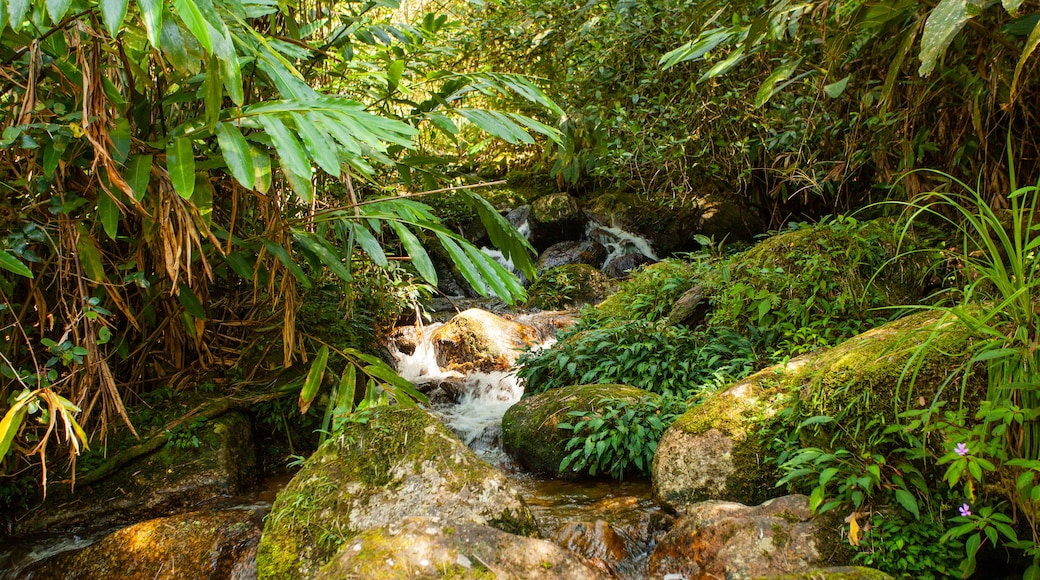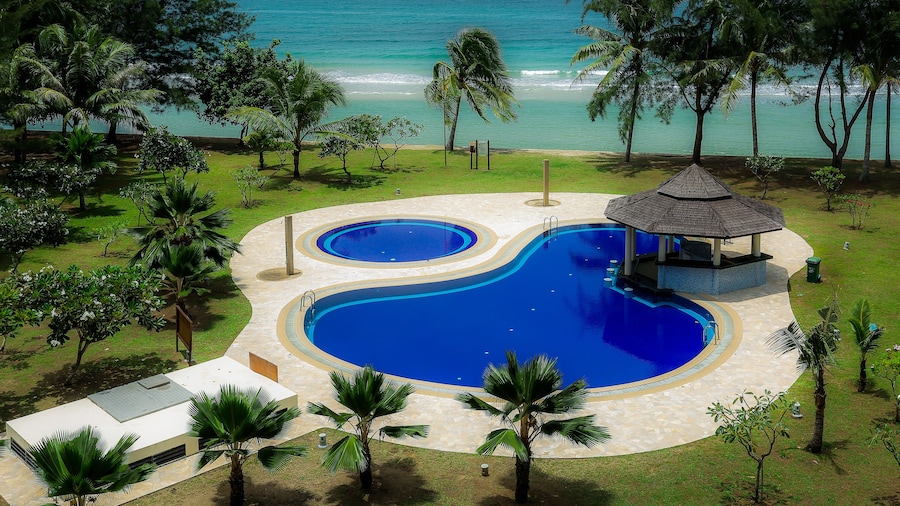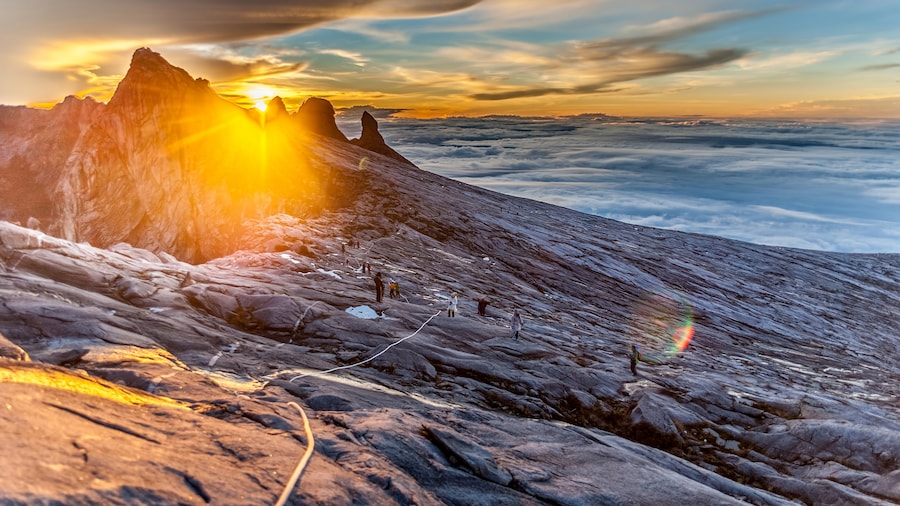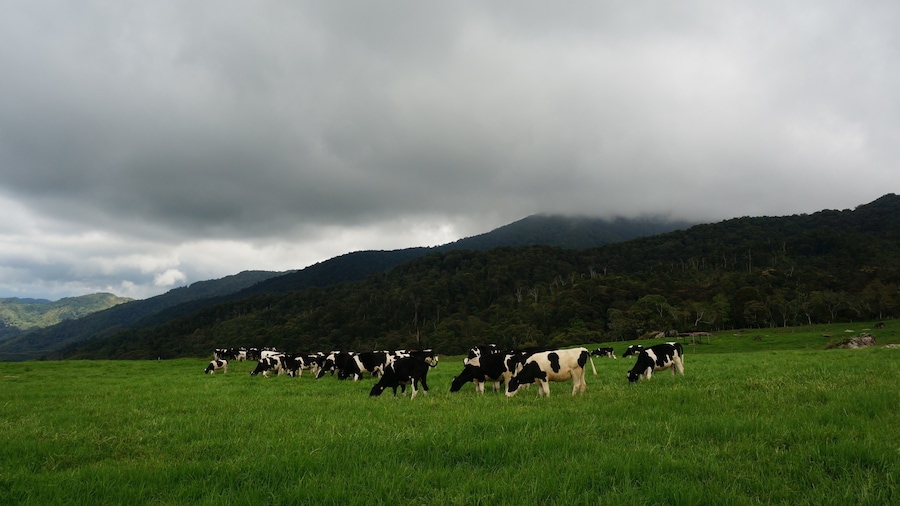Pass some of the world’s rarest flowers as you make the accent up Borneo’s tallest mountain or follow trails that weave through rain forest at this national park.
The mountainous terrain of Malaysia’s first World Heritage Site is home to the tallest peak in Borneo and hundreds of plants found nowhere else in the world. See more than 700 species of orchid and the rafflesia, an endangered species of flower said to be the largest in the world. When fully grown the rafflesia can reach 1 metre (3 feet) in diameter, although you have to be lucky to catch it in full bloom. The carnivorous pitcher plant is more common to see and is capable of holding up to 3 litres (1 gallon) of water at a time.
Keep your eyes peeled for the wide range of animals that live beneath the jungle canopy. Bornean gibbons can be seen swinging between trees. Flying squirrels and leopard cats live in the lower branches. Listen for the cacophony made by the more than 300 species of bird that call the park home.
Mount Kinabalu is a sacred site for the local tribes, who believe that souls of the deceased rise to its summit. Climb the peak yourself with the help of a mountain guide. The climb takes between two and three days and is renowned for its spectacular panoramic views and sunrises.
Spend the night at Laban Rata before completing the climb. The mountain lodge is just a short walk from the summit so you can wake early and catch the sun rising over the northern coast of Borneo. Don’t forget a warm jumper as at 4,095 metres (13,435 feet) high you’re likely to forget you’re in tropical Southeast Asia. Anybody is able to make the climb so long as you are accompanied by an accredited guide and hold the correct permits.
Catch the bus from the capital to reach the entrance to the national park, just 90 kilometres (56 miles) away. After climbing Mount Kinabalu you can take the shuttle to Poring to soak your tired muscles in its famous hot springs. If you want to explore other areas of the huge national park, hiring a car from Kota Kinabalu airport is recommended.























